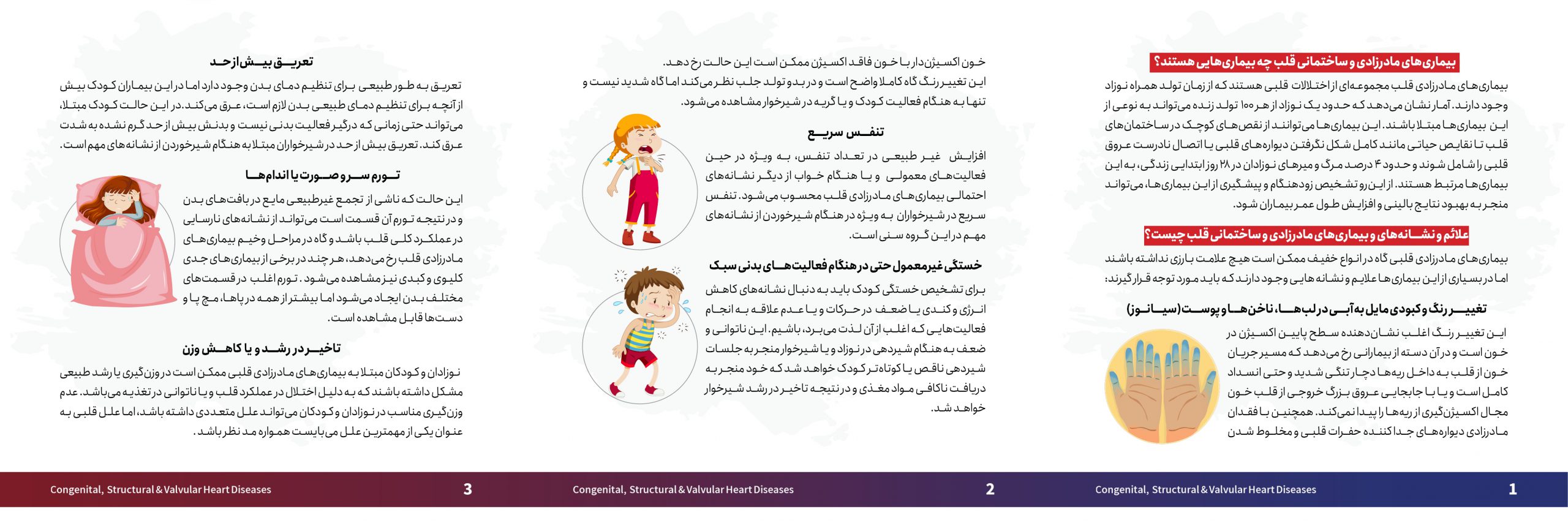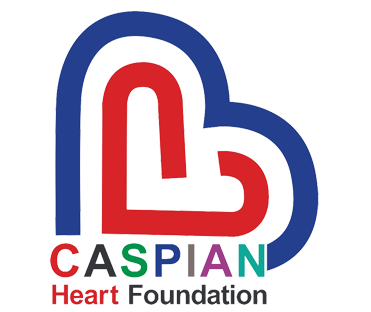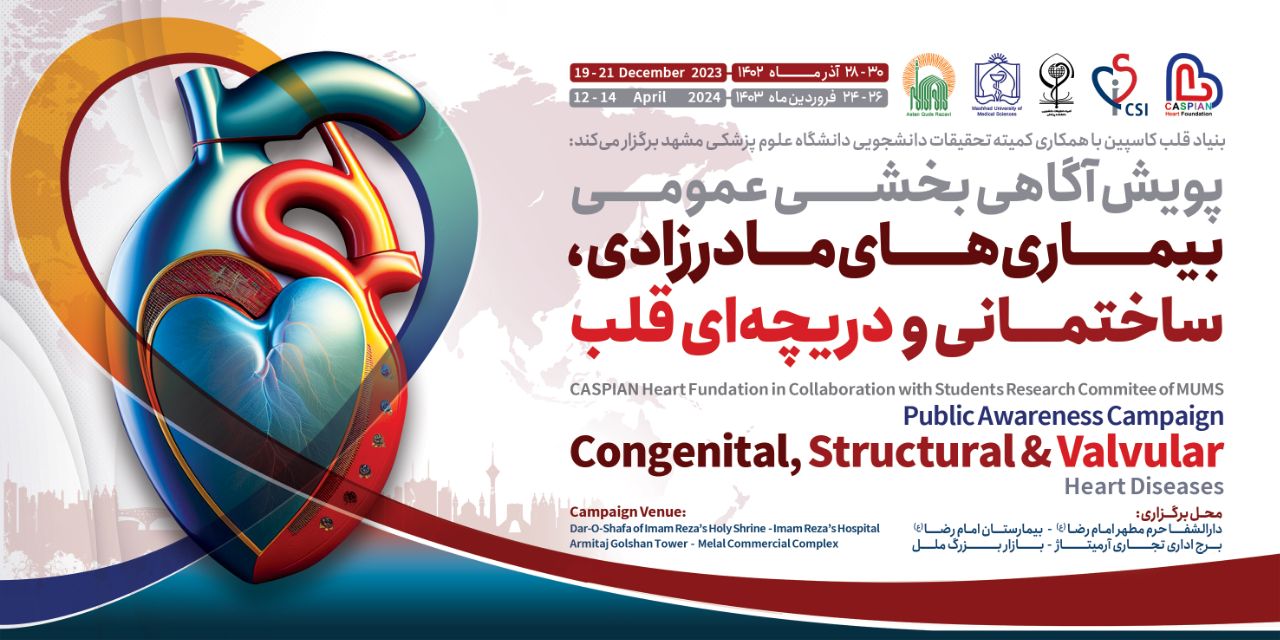Caspian Heart Foundation, in collaboration with the Student Research Committee of Mashhad University of Medical Sciences, launched a campaign from December 19th to 21st to raise awareness about congenital heart diseases in four centers in Mashhad, Iran: Imam Reza Hospital, Dar-al-Shifa of Imam Reza Shrine, Armitaj Tower, and Melal Grand Mall.
During this three-day campaign, students from Mashhad University of Medical Sciences, under the supervision of faculty members, conducted cardiac examinations, measured blood pressure, and obtained electrocardiograms from visitors using remote electrocardiogram transmission technology. They also provided information about the prevalence, types, and symptoms of congenital heart disease.
Dr. Behzad Alizadeh, an associate professor at Mashhad University of Medical Sciences and a pediatric congenital heart disease specialist, discussed this campaign in an interview with Webda. He said, “Congenital heart diseases are a group of heart disorders that are present at birth. Statistics show that about one in every 100 live births can be affected by some form of congenital heart disease.”

He added, “These diseases can range from small defects in the structure of the heart to life threatening defects such as incomplete formation of the heart walls or improper connection of the heart’s blood vessels. Approximately 4% of neonatal deaths in the first 28 days of life are associated with these diseases. Therefore, early diagnosis and prevention of these diseases can lead to improved clinical outcomes and increased patient life expectancy.”

Dr. Alizadeh also spoke about the symptoms of congenital heart diseases. He said, “Congenital heart disease may not have any obvious symptoms in mild cases, but in many cases, there are signs and symptoms that should be noted. These symptoms include:
- Blueish discoloration of the lips, nails, and skin (cyanosis): This discoloration often indicates low oxygen levels in the blood. It occurs in patients with severe narrowing or complete obstruction of the blood flow from the heart to the lungs, or with displacement of the large blood vessels exiting the heart. It can also occur with congenital absence of the walls that separate the chambers of the heart, resulting in mixing of oxygenated and deoxygenated blood. This discoloration is sometimes very obvious and is noticeable at birth, but it is sometimes not severe and is only seen when the child is active or crying.
- Rapid breathing: Increased respiratory rate, especially during normal activities or during sleep, is another possible sign of congenital heart disease. Rapid breathing in infants, especially during feeding, is an important sign in this age group.
- Unusual fatigue even with mild physical activity: To diagnose fatigue in a child, look for signs of decreased energy, slowness or weakness in movements, or lack of interest in activities that the child usually enjoys. This weakness and fatigue during breastfeeding in a newborn or infant will lead to incomplete or shorter feeding sessions, which in turn will lead to inadequate intake of nutrients and, as a result, delayed growth in the infant.
- Excessive sweating: Sweating is naturally present to regulate body temperature, but in these patients, the child sweats more than is necessary to regulate body temperature. In this condition, the affected child can sweat profusely even when they are not engaging in physical activity and their body is not too warm. Therefore, excessive sweating in infants with feeding is an important sign.
- Swelling of the head, face, or limbs: This condition, which is caused by the accumulation of abnormal fluid in the tissues of the body and resulting swelling of that area, can be a sign of heart failure and sometimes occurs in advanced stages of congenital heart disease. However, it is also seen in some serious liver and kidney diseases. Swelling often occurs in different parts of the body, but it is most noticeable in the feet, ankles, and hands.
- Delayed growth or weight loss: Infants and children with congenital heart disease may have difficulty gaining weight or growing normally, due to impaired heart function or inability to feed. Failure to gain weight appropriately in infants and children can have multiple causes, but cardiac causes should always be considered as one of the most important causes.
Dr. Alizadeh also noted that frequent respiratory infections, such as pneumonia or bronchitis, can also be symptoms of this disease. They often occur in cases of congenital heart disease in which the volume of blood in the pulmonary circulation is increased. Sudden loss of consciousness, dizziness, or lightheadedness is another sign of congenital heart disease. It is sometimes caused by obstructive lesions in the exit pathways of the heart and sometimes by irregular heartbeat. These complications can cause problems with blood supply to various parts of the body.
In response to the question of when to see a doctor, Dr. Behzad Alizadeh said, “If you observe any of the symptoms and signs mentioned in a newborn, infant, or child, you should see a doctor immediately. Early diagnosis of congenital heart disease can help to reduce complications and improve treatment outcomes. In addition, fetal heart echocardiograms can be performed by pediatric cardiologists during pregnancy to diagnose fetal heart defects and initiate treatment before birth.”










